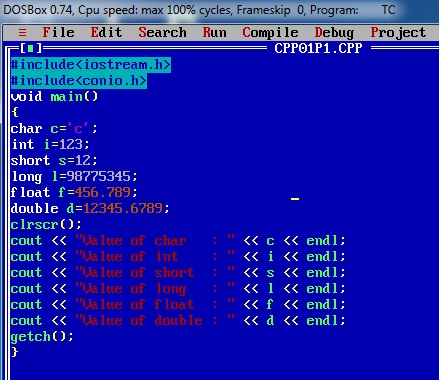

The format in which the integer value represents a pointer is a platform-specific. It can also cast the pointers to or from the integer types.

The operation result is the simple binary copy of a value from one pointer to the other.Īll the pointer conversions are allowed: neither the content pointed, nor a pointer type itself is checked.

The reinterpret_cast converts any pointer type to any other pointer type, even of unrelated classes. For example, to pass the const pointer to the function that expects a non-const argument. The const_cast type of casting manipulates the constness of the object pointed by the pointer, either to be set or to be removed. It naturally includes pointer upcast (converting from pointer-to-derived to the pointer-to-base), in the same way as allowed as the implicit conversion.īut the dynamic_cast can also downcast (convert from pointer-to-base to the pointer-to-derived) polymorphic classes (those with virtual members) if -and only if- the pointed object is the valid, complete object of the target type. Its purpose is to ensure that a result of the type conversion points to the valid, complete object of the destination pointer type. The dynamic_cast can only be used with the pointers and references to classes (or with void*). #C like casting # Syntax (type) expression Generic typecasting can be done in two ways. We generally force explicit type conversion because it either not following the order of high order rule of implicit conversion or the conversion is not commonly occurring.Įxplicit type conversion is user-defined. When we explicitly do type conversions with user intervention, it is called explicit type conversion. In some languages, such as Python, you can simply start using the variable without declaring it.Correct order for type casting is from low to higher datatype as listed below:īool -> char -> short int -> int -> unsigned int -> long int -> unsigned long int -> long long int -> float -> double -> long doubleĪll data types of the variables are upgraded to the data type of the variable with largest data type.ĭrawbacks of the implicit type conversion can be avoided by using explicit type conversion. In many programming languages variables must be declared before they can be used, for example: Used where data is restricted to True/False or yes/no options. Used for numbers that contain decimal points, or for fractions. Used for a combination of any characters that appear on a keyboard, such as letters, numbers and symbols. Some are used to store numbers, some are used to store text and some are used for much more complicated types of data.

This Python (3.x) program uses two meaningful names when calculating the perimeter of a square: > side_length = 5īecause meaningful names have been used in this code, it is easy to know what each variable is used for. Digits: variable names should not start with a digitĬonsider these example variable names, all of which could be variable names to store the length of a side of a square: Variable name.Use underscores or camelCase instead, eg total_money totalMoney). Spacing: variable names should not have a space in them.Consistency: ‘name’ is not the same as ‘Name’ or ‘NAME’.There are some rules about variable names: The name given to each variable is up to the programmer, but ideally a variable name should have meaning, ie it should reflect the value that it is holding. It is important to use meaningful names for variables:įor example, pocketMoney = 20 means that the variable ‘pocketMoney’ is being used to store how much pocket money you have. Each variable is named so it is clear which variable is being used at any time.


 0 kommentar(er)
0 kommentar(er)
